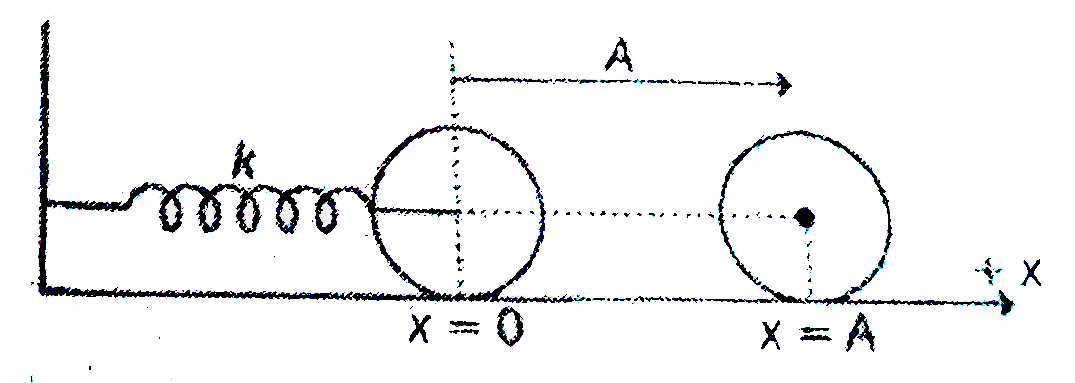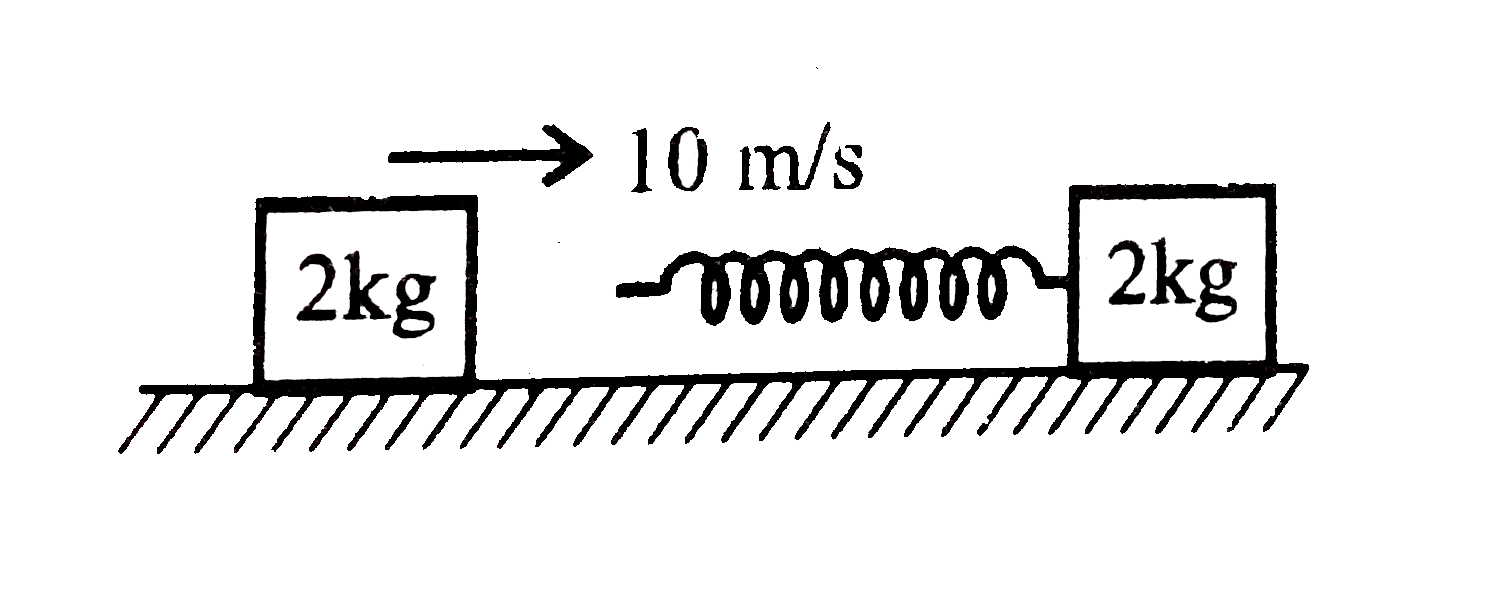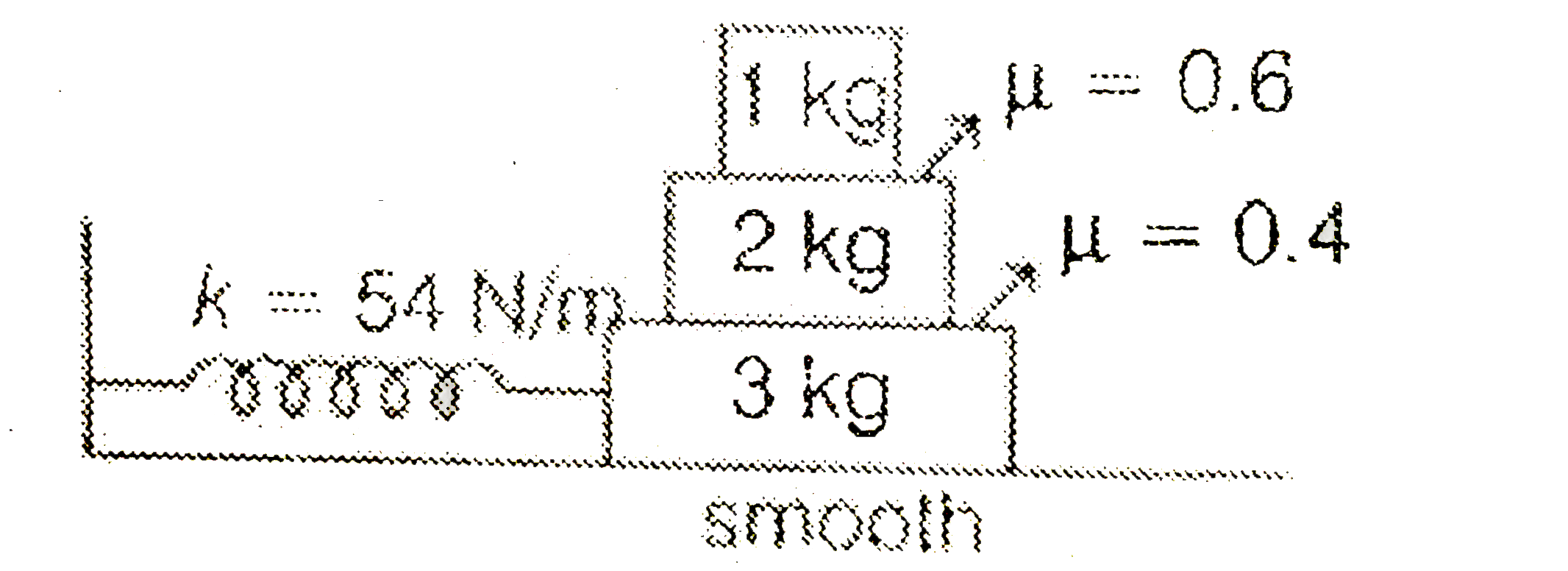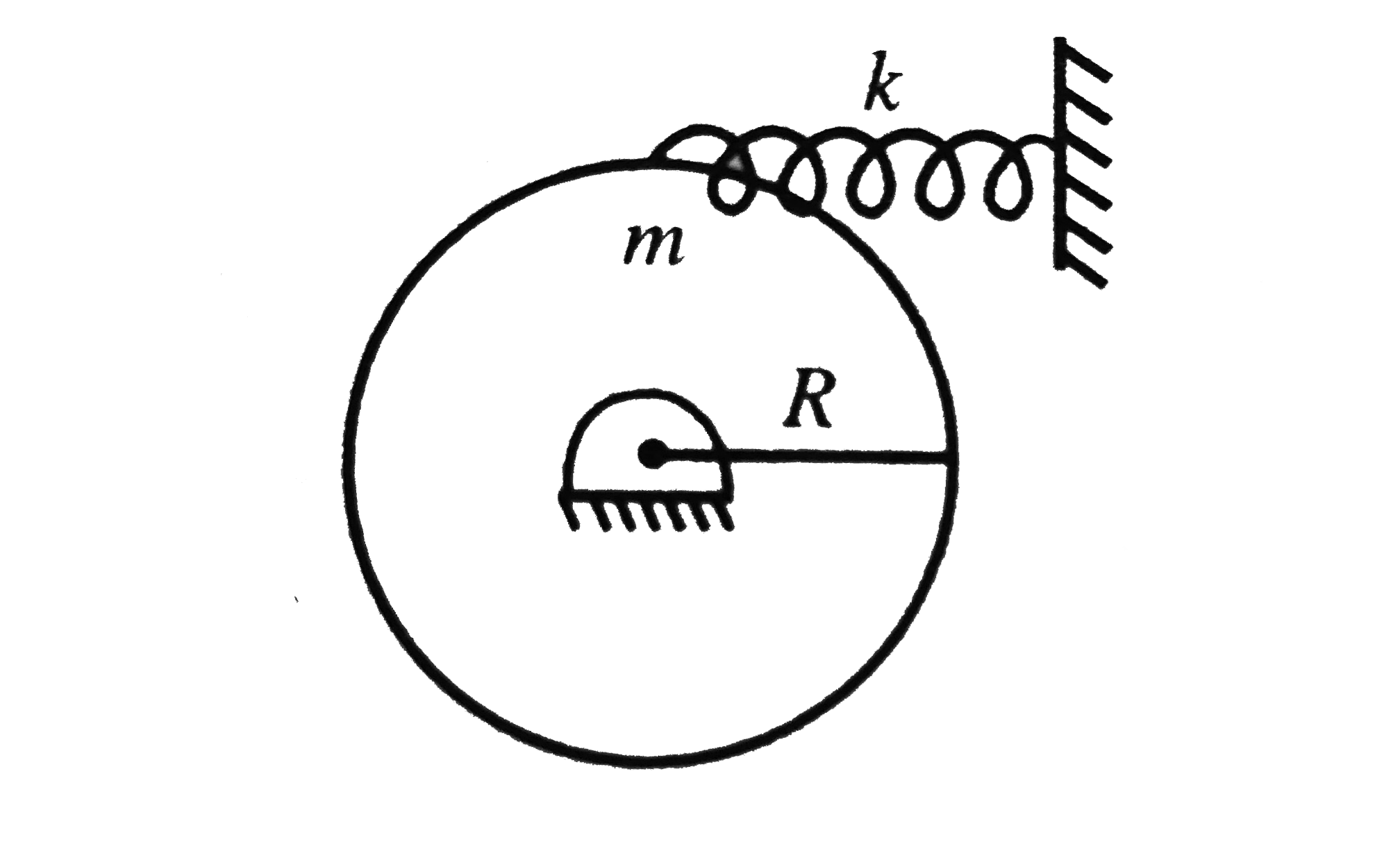In the problem if k = 10 N/m, m=2kg, R=1m and A=2m. Find linear speed of the disc at mean position.
 Solution in Gujrati
Solution in Gujrati
√403m/s
√20m/s
√103m/s
√503m/s
The correct Answer is:A
12kAY2=12mv2(1+k2R2)=12mv2(1+12)=34mv2
v=√2kA23m=
⎷2(10)(2)23(2)=√403ms−1
Topper's Solved these Questions
- SIMPLE HARMONIC MOTIONBOOK - ALLEN CHAPTER - SIMPLE HARMONIC MOTIONEXERCISE - Comprehension Base Questions (3)
2 Videos
- SIMPLE HARMONIC MOTIONBOOK - ALLEN CHAPTER - SIMPLE HARMONIC MOTIONEXERCISE - Comprehension Base Questions (4)
2 Videos
- SIMPLE HARMONIC MOTIONBOOK - ALLEN CHAPTER - SIMPLE HARMONIC MOTIONEXERCISE - Comprehension Base Questions (1)
2 Videos
- RACEBOOK - ALLEN CHAPTER - RACEEXERCISE - Basic Maths (Wave Motion & Dopplers Effect) (Stationary waves & doppler effect, beats)
25 Videos
- TEST PAPERBOOK - ALLEN CHAPTER - TEST PAPEREXERCISE - PHYSICS
4 Videos
Similar Questions
A 2kg block moving with 10m/s strikes a spring of constant π2N/m attached to 2Kg block at rest kept on a smooth floor. The time for which rear moving block remain in contact with spring will be-

View SolutionAn object of mass m is moving in unifrom circular motion in xy-plane. The circle has radius R and object is moving clockwise around the circle with speed v. The motion is projected onto the x-axis where it appears as simple harmonic motion accoding to x(t)=Rcos(ωt+ϕ). The motion starts from pointof coordinates (0,R)
In this projection ω is -
View SolutionPassage IV) Angular frequency in SHM is given by ω=√km. Maximum acceleration in SHM is ω2 A and maximum value of friction between two bodies in contact is μN, where N is the normal reaction between the bodies.

In the figure shown, what can be the maximum amplitude of the system so that there is no slipping between any of hte blocks?
View SolutionThe frequency of a radar is 780 MHz. After getting reflected from an approaching aeroplane, the apparent frequency is more than the actual frequency by 2.6 kHz. The aeroplane has a speed of
View SolutionChoose the correct statement:
View SolutionIf kandn are positive integers and sk=1k+2k+3k++nk, then prove that m∑r=1^(m+1)Crsr=(n+1)m+1−(n+1).
View Solution3.If m o* n are positive integers such that m^(2)+2n=n^(2)+2m+5, then the value of n is
View SolutionFor any positive integer (m,n) (with n>=m), Let ([nm])=.^(n)C_(m) Prove that ([nm])+2([n-1m])+3([n-2m])+...+(n-m+1)([mm])
View SolutionA car travels the first one-third of a certain distance with a speed of 10 km/hr the next one-third distance with a speed of 20 km/hr and the lat one-third distance with a speed of 60 km/hr . The average speed of the car for the whole journey is 18km/hr b. 24km/hr c. 30km/hr d. 36km/hr
View SolutionA man's speed with the current is 15 km / hr and the speed of the current is 2.5 km/ hr. The man's speed against the current is: 8.5 km/hr b. 9 km/hr c. 10 km/hr d. 12.km/hr
View Solution
A uniform disc of mass m and radius R is pivoted smoothly at its centre of mass. A light spring of stiffness k is attached with the dics tangentially as shown in the Fig. Find the angular frequency in rads of torsional oscillation of the disc. (Take m=5kg and K=10Nm.)
View SolutionIn the problem if k = 10 N/m, m=2kg, R=1m and A=2m. Find linear speed of the disc at mean position.

View SolutionPoint M, N, O are co-linear such that d(M, N) =10, d(N, O) =18. Find d(M, O) =?
View SolutionFind the sum of the possible integer values of m:
2m+n=10
m(n−1)=9
View Solutionयदि m और n दो धनात्मक पूर्णांक इस प्रकार है कि m<n और ∑d/md=∑d/nd (यहाँ d / k का अर्थ d, k का धनात्मक भाजक है) तब
View Solution
